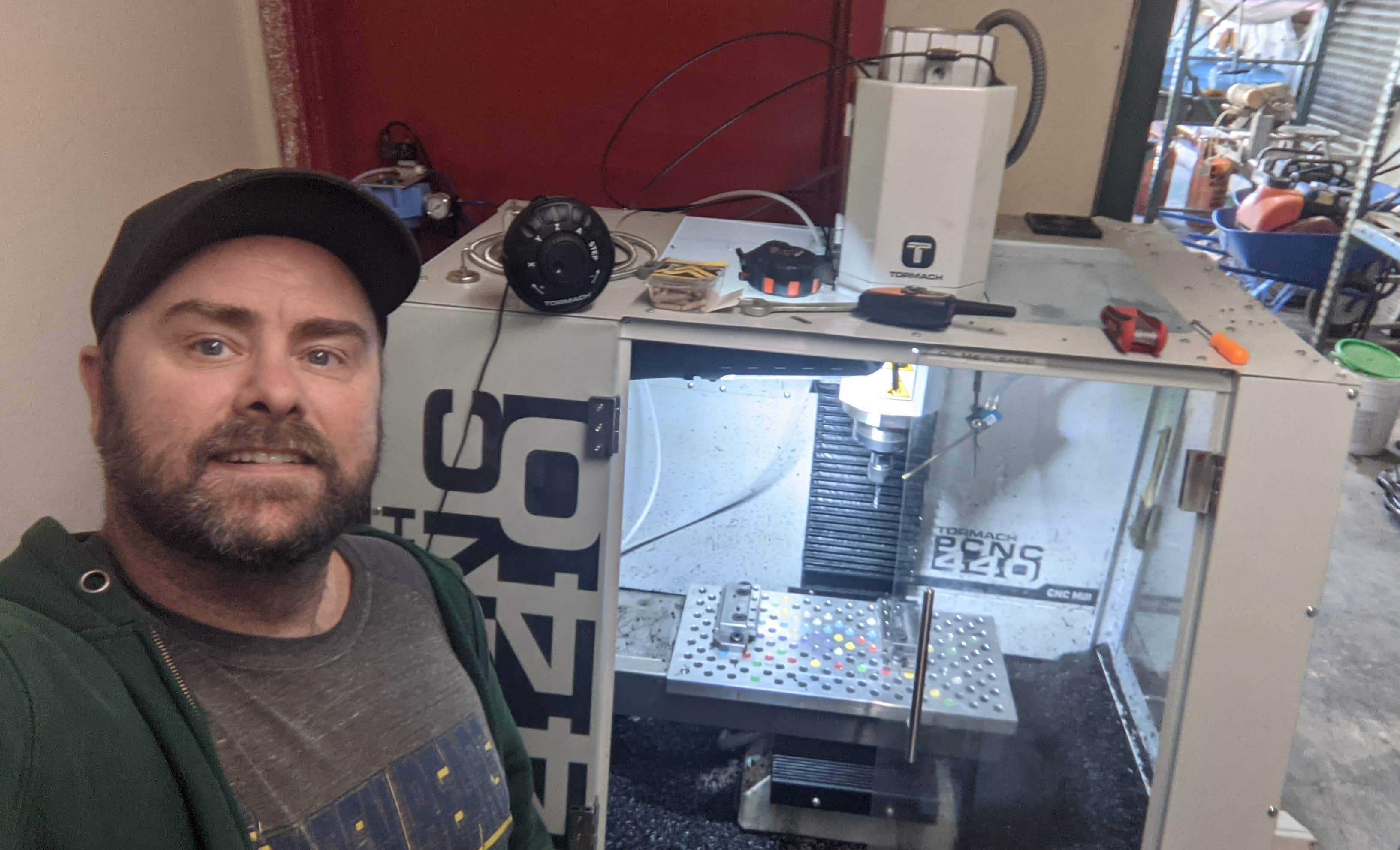In today's blog post with our Tormaker Community, we're speaking with hobbyist Brandon Kittredge who uses his PCNC 440 to make combat bots and building kits.
Q: Tell us a bit about yourself, Brandon!
A: I’m a landscape contractor by trade but the business runs itself quite well. I needed to find a hobby that meant I was learning something new, getting out and about to travel and most importantly doing something I was interested in.
I started out with a wooden router but soon realised it wasn’t really fit for purpose. I’d seen a lot of Robert Cowan videos and noticed he used a Tormach. I then spent a lot of time researching machines and realised Tormach was the one I wanted to purchase. It’s a great hobby. I guess you could say I was a hobbyist.
Q: What machine do you have?
A: I have the PCNC 440.
Q: What do you make?
A: I make small combat robots like the ones you see on the show Battlebots or Robot Wars. They have competitions and battles all around the world, ranging from 3-pound BattleBots to 320-pound BattleBots. Those are the big leagues! Anyway, as I mentioned, I watched a lot of Robert Cowan videos, and he, too, made combat robots. It was really inspiring and I realized that I wanted to do that.
I've recently made Taserface and Murder Hornet, two bots that will battle. I also sold Labotomy, another bot which I’ll actually be battling against one of my own. Aside from creating BattleBots, I create kits to build these bots ready to compete, it’s a lot of fun!
Q: Why did you choose a Tormach?
A: There are a few things that drove my decision, those being wider application, the precision and ease of use, and finally the Tormach community. From a hobby perspective, I was doing something I loved. The wider application and ability to cut a variety of metals was extremely important to me, if not the most important. Combat metals need to be strong, robust, and withstand a lot of force.
From researching Tormach, it became clear that with some practice and time, it would be quite an easy piece of kit to use. This was a major draw for me, as it was no longer daunting or intimidating.
Lastly, the community. If you didn’t already know, the Tormach community is so willing and able to help out. Whether it’s use-case questions, issues I’m having – you name it – the community are there and ready! Tormach is more like a family than anything else!
Q: What do you like about your Tormach?
A: I would say the passive probe is one of my favorite features of my Tormach. It’s a time saver, a frustration saver, and basically makes machining autonomous when it comes to setting up a part and finding the offset. I had to do this manually, which took about an hour, but now with Tormach, it takes around two minutes. It’s all automated and I can now successfully find the center 99% of the time!
Q: What advice would you give to anyone thinking about a Tormach?
A: If I had to give anyone a piece of advice about Tormach and machining with Tormach, it would be: don't let the frustration of trial and error set you back or prevent you from getting over hurdles and hiccups.
The community is there to help, as is the Tormach team. Plus, once you learn your mistake and solve the issue, the satisfaction definitely outweighs all the time, energy, and turmoil you went through to learn.



